Angel Wing, Cytopleura costata
Angel Wing, Fallen Angel Wing, Bivalve and Scientific Classification Cyrtopleura costata (Linnaeus). Photos, general information on habitat and range..
angelwing Cyrtopleura costata (Linnaeus)

angelwing Cyrtopleura costata (Linnaeus)
Description: (5 3/4 inches) Fairly large, elongate shell tapers to a rounded point. Strongly resembles the wing of an angel. About 30 sharply beaded ribs. Shell rolls outward on top -- this edge not braced by partitions. Very thin shell breaks easily.
Color: Pure white exterior and interior, occasionally pink at the edges. Grayish periostracum.
Habitat: Lives offshore and in estuaries, burrowed as much as 3 feet deep in mud or clay. Occasionally washed onto beaches.
Range: New Jersey to Brazil.
Notes: This is a popular shell with delicious meat. The pink tinges occur when the animal feeds on a certain type of algae. It moves up and down in its burrows. If dug up, the fragile shell must be placed immediately into a container of water or it will close suddenly and shatter.
Source: NC Sea Grant
Seashells of North Carolina Field Guide


Angel Wing Shells 2816 x 2112 pixels
485 k
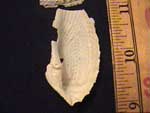 |
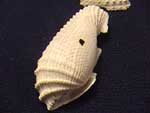 |
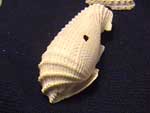 |
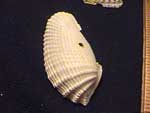 |
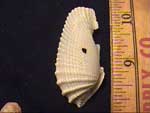 |
|
Atlantic mud-piddock, Fallen angelwing Barnea truncata (Say)
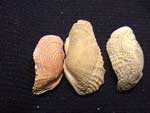 |
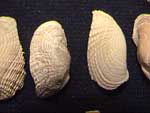 |
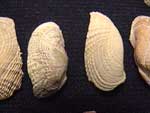 |
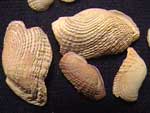 |
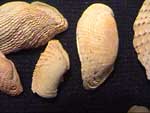 |
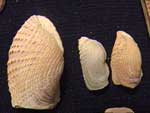 |
Atlantic mud-piddock, Fallen angelwing Barnea truncata (Say)
Description: (2 1/4 inches) Similar to angelwing but with weaker sculpture. One end squared off and other end pointed. Loose accessory plates above the hinge on live specimens.
Color: White exterior and interior.
Habitat: Lives burrowed into mud, clay or softwood. Occasionally washed onto sounds and ocean beaches..
Range: Maine to Brazil.
Notes: Also called a fallen angelwing. This fragile shell is rarely dug from mud without breaking. It burrows deeply and has long, united siphons.
Source: NC Sea Grant
Seashells of North Carolina Field Guide
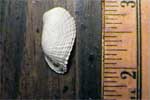 |
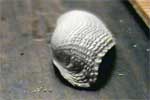 |
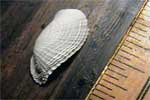 |
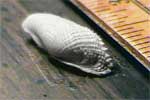 |
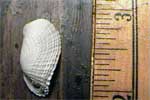 |
|
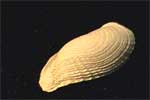 |
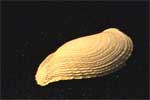 |
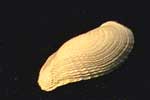 |
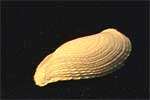 |
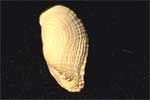 |
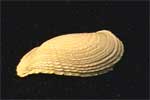 |
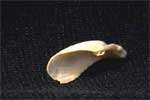 |
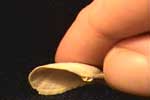 |
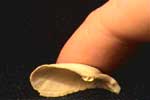 |
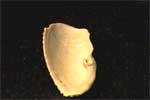 |
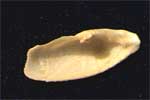 |
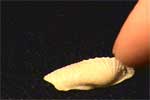 |
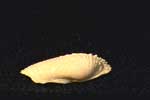 |
||

Fallen Angel Wing 491 k
2816 x 2112 pixels

Fallen Angel Wing 548 k
2816 x 2112 pixels

Fallen Angel Wing 469 k
2816 x 2112 pixels

Fallen Angel Wing 485 k
2816 x 2112 pixels
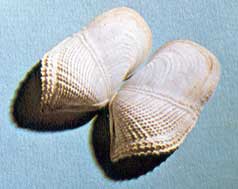 Zirfaea crispata (Linne, 1758), the great Piddock. Photo Source: Shell Book, Atlantic, Gulf and Carribean |
false angelwing, Petricola pholadiformis (Lamarck)

False Angel Wing
false angelwing, Petricola pholadiformis (Lamarck)
Description: (2 3/4 inches) Thin, elogate shell resembling a small angelwing but lacks the rolled-out hinge area. Beak at one end of the shell. Strong radial ribbing on the beak end. Teeth on hinge. Deep pallial sinus.
Color: White exterior and interior.
Habitat: Lives in intertidal zone, burrowed into hard clay or peat. Commonly found on sounds and ocean beaches.
Range: Canada to Uruguay.
Notes: It burrows into hard surfaces and has long, partially united siphons.
Source: NC Sea Grant
Seashells of North Carolina Field Guide
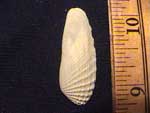 |
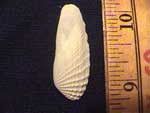 |
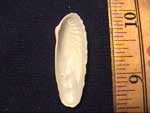 |
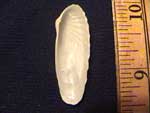 |

False Angel Wing 134 k
720 x 896 pixels

False Angel Wing 102 k
732 x 1466 pixels

False Angel Wing 188 k
2336 x 1040 pixels
Sharon: I'm really not sure about these shells. I don't see any wedge piddocks in there -- I don't see any with the indented radial line that the wedge piddock has. Possibly some fallen angelwings, and false angelwings. Not sure about rupellarias either -- the Atlantic rupellaria grows to about 1-inch. What are the sizes of the shells in the bottom 9+ photos? Your photography is definitely getting better. Nice that you have a good camera and that you're learning how to use it! Terri > http://www.edwardtbabinski.us/beach_kids/sea_shells/angel_wings/ > > The Atlantic Rupellaria or Wedge Piddock? > > It strongly resembles an angelwing, but it is not the angelwing. -- ~~~~~~~~~~~~~~~~~~~~~~~~~~~~~~~~~~~~~~~~~~~~~~~~~~~~~~ Terri Kirby Hathaway Marine Education Specialist North Carolina Sea Grant www.ncseagrant.org



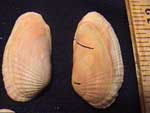 |
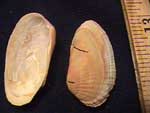 |
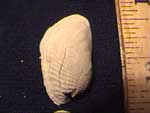 |
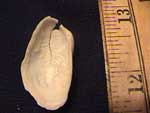 |
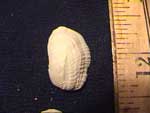 |
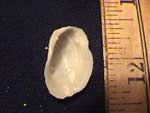 |
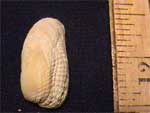 |
 |
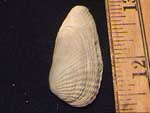 |
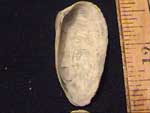 |
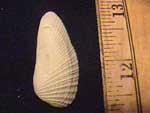 |
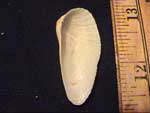 |
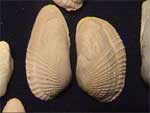 |
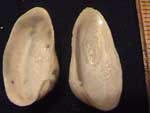 |
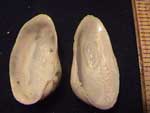 |
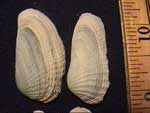 |
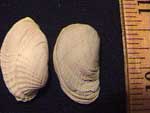 |
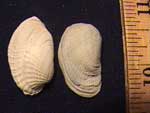 |
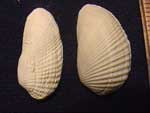 |
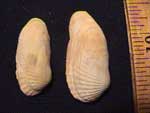 |
|



 |
 |
 |
 |

Angelwing 383 k
2816 x 2112 pixels

Angelwing 354 k
2816 x 2112 pixels

No comments:
Post a Comment